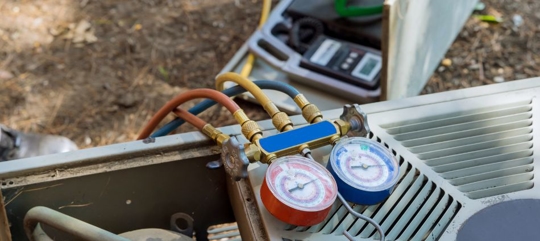Send us an email
Please enter your name and contact info.
Please enter your name and contact info.
Call Us Today! (850) 748-1066

Serving Families Throughout Pensacola

Air conditioning has become a standard feature in many homes and workplaces worldwide, providing comfort and improving our quality of life. But how exactly do these cooling machines operate? In this article, we’ll explore the principles behind air conditioning, the components involved, and the energy efficiency aspects of these indispensable devices.
Before diving into how an AC unit works, it’s essential to understand the evolution of air conditioning systems. The concept of air conditioning dates back to ancient Egypt, where people used wet reeds hung over windows to cool the incoming air. Modern air conditioning as we know it was invented in 1902 by Willis Carrier.
Today, there are several types of air conditioning systems to suit different needs and environments. These include:
Each of these types operates on the same fundamental principles and components, which we’ll cover in the following sections.
Air conditioning units work based on the principles of thermodynamics, specifically utilizing the refrigeration cycle. The cycle includes four primary stages: evaporation, compression, condensation, and expansion.
This component is located inside the house and is responsible for cooling the air. The refrigerant in the evaporator coil evaporates when it absorbs heat from the indoor air.
Found in the outdoor unit, the compressor plays a crucial role in an air conditioner’s mechanics. It compresses the refrigerant gas, raising its temperature and pressure.
This coil is also located outside the house. It expels the heat carried by the refrigerant to the outside atmosphere, causing the refrigerant to condense.
This component controls the amount of refrigerant going into the evaporator coil, starting the refrigeration cycle again.
When selecting an air conditioner, energy efficiency is a crucial factor to consider. The energy efficiency of an AC unit is often measured using the Seasonal Energy Efficiency Ratio (SEER). The higher the SEER rating, the more energy-efficient the air conditioner is.
Advancements in technology have also led to the development of smart air conditioners. These units offer improved energy efficiency and can be integrated into a broader IoT system for better home automation.
Routine maintenance can keep your air conditioner functioning at its best. Regular filter changes, coil cleaning, and professional inspections are part of a good AC maintenance schedule.
Recognizing common AC issues and knowing how to troubleshoot them can save you time and money. Some problems you might encounter include leaks, noises, or the AC unit not cooling properly. While some issues can be resolved through simple fixes, others might require professional assistance.
Air conditioners can have a significant environmental impact, primarily through their energy consumption and the use of refrigerants. However, responsibly recycling old AC units and using energy-efficient models can help mitigate this.
Understanding how an AC unit works can demystify this common household appliance and help you make informed decisions when choosing and maintaining an AC unit. With modern technological advances, we can expect air conditioning to become even more efficient and environmentally friendly in the future.
The post Understanding Air Conditioning: A Comprehensive Guide on How an AC Unit Works appeared first on Diamond Air Design.